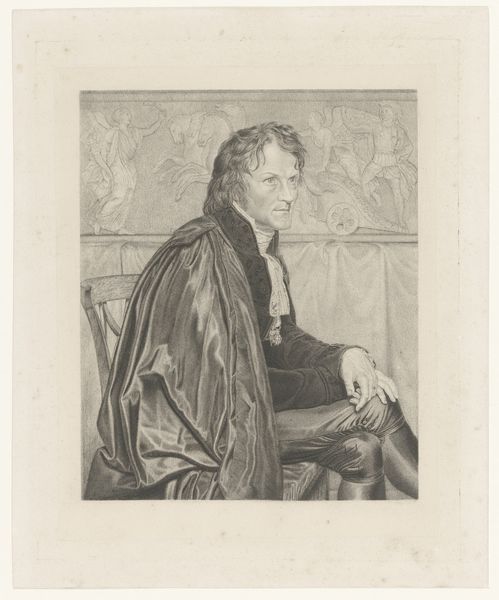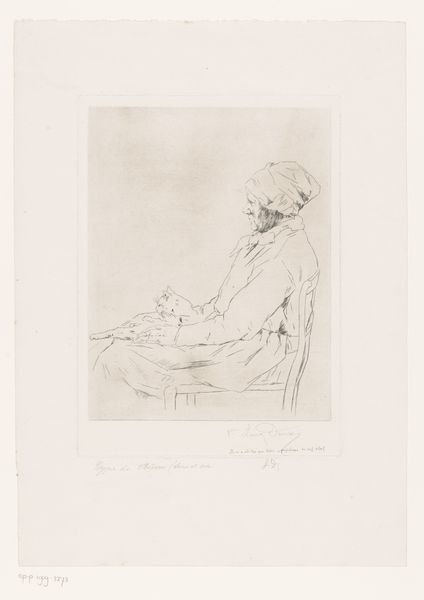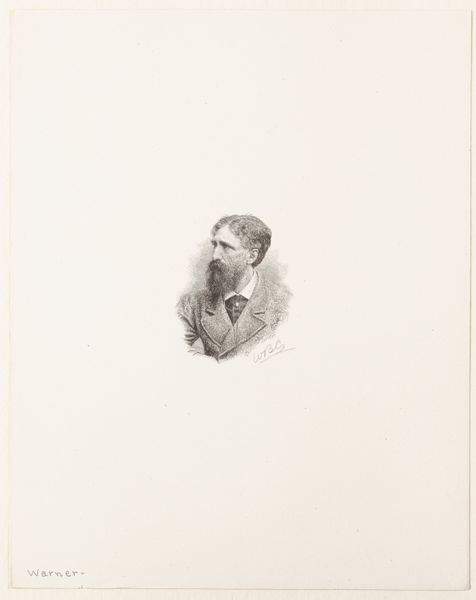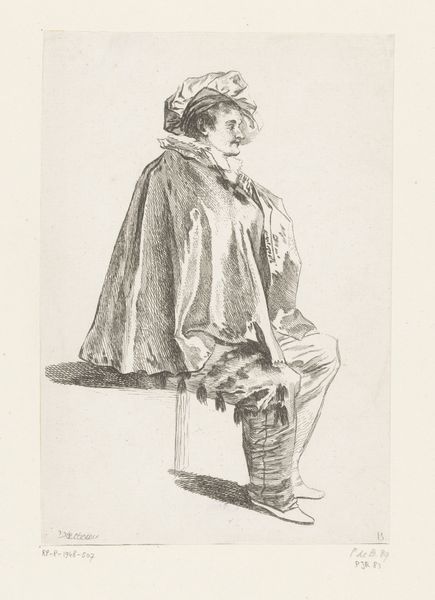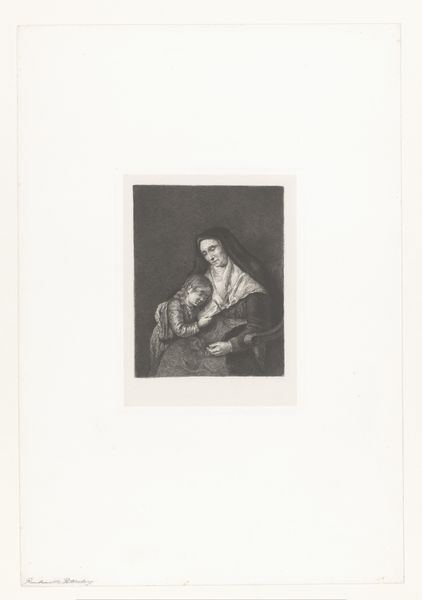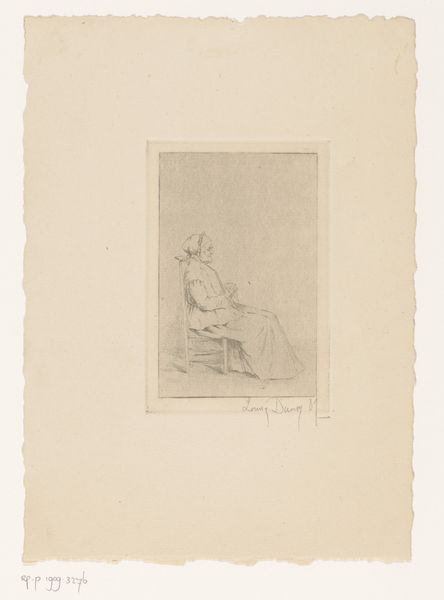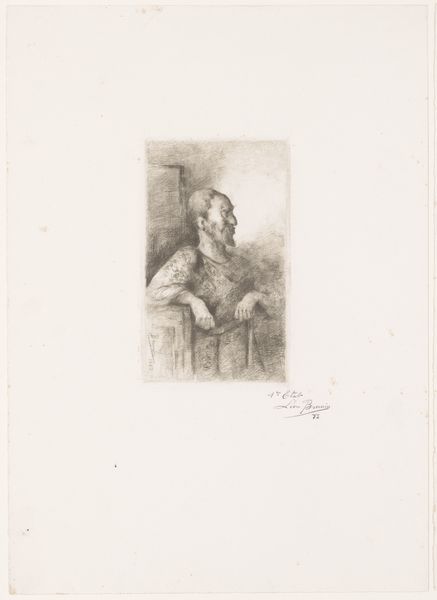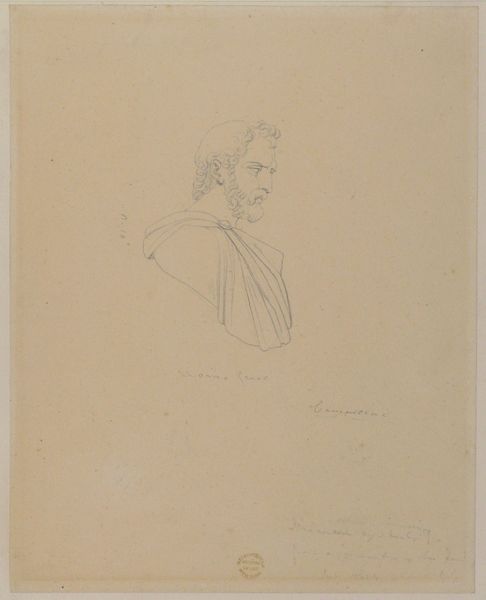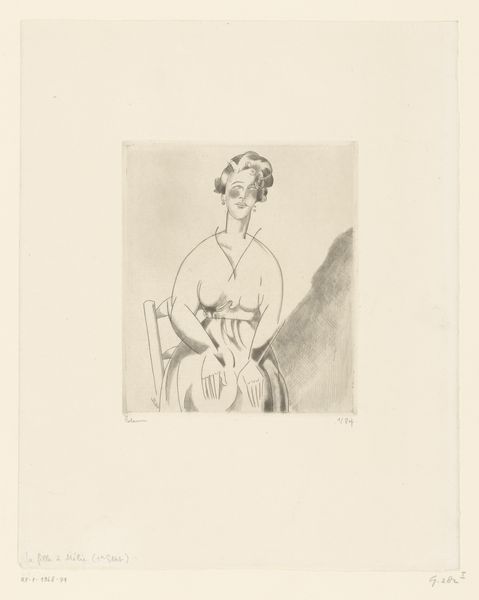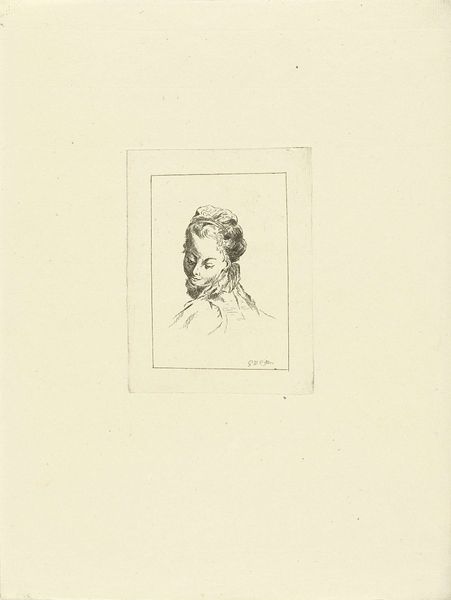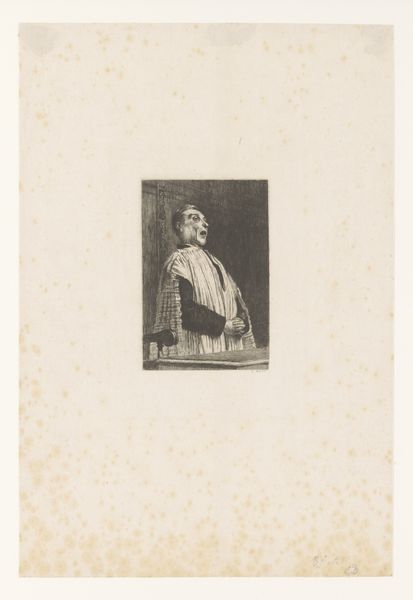
drawing, print, etching, graphite, engraving
#
portrait
#
drawing
#
neoclacissism
# print
#
etching
#
pencil drawing
#
graphite
#
portrait drawing
#
history-painting
#
engraving
Dimensions: 323 mm (height) x 262 mm (width) (bladmaal)
Curator: What an exquisitely rendered portrait. This print from 1850 depicts the sculptor A. Thorvaldsen, crafted by Erling Eckersberg, utilizing etching and engraving techniques to achieve a remarkable likeness. Editor: It’s strikingly neoclassical. The crisp lines and limited tonal range almost feel like a blueprint, less a celebration of Thorvaldsen's personality and more an exercise in technique. You can almost smell the acid used in the etching process! Curator: Indeed! The setting is fascinating. Eckersberg positions Thorvaldsen before a frieze that resembles his own sculptural works. Note how the figures behind him seem to echo his own pursuit of ideal forms, anchoring him in a lineage of classical artists and heroes. Editor: But even the depiction of Thorvaldsen himself reads as though he is himself a carefully crafted sculpture. It’s all surface and detail; look at how meticulously each fold in his drapery has been recorded! Curator: Ah, but isn’t that deliberate? Eckersberg seems to be exploring the very act of creation and artistic legacy. Thorvaldsen becomes an icon, his identity intertwined with his artistic output. Editor: True, and thinking about it further, the precise lines serve to monumentalize not just Thorvaldsen, but the means of reproducing his image for mass consumption. Engraving made art more accessible. Did this democratization truly elevate the sculptor or dilute his singular vision? Curator: A profound question. The print certainly offers us a window into the ambitions of Neoclassicism, particularly the desire to connect to an idealized past while creating heroes for the present. There is this deep cultural yearning imbedded into its symbolism. Editor: Absolutely. Seeing how these historical modes of production mediated artistic reputations provides insight into shifting aesthetic values, reminding us that artistic genius is constructed. Curator: It highlights the power of symbols in creating a legacy. It goes to show us that a portrait doesn't simply capture a person's image, it really constructs one. Editor: Indeed, this engraving reminds us of the labour involved in art, both in its original creation and subsequent reproduction, offering much to consider.
Comments
No comments
Be the first to comment and join the conversation on the ultimate creative platform.
